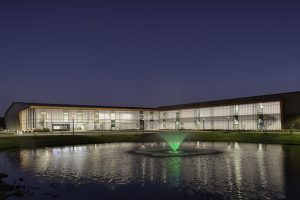Green infrastructure comes in many forms, but incorporating these features into a project is not a one-size-fits-all solution.
What is green infrastructure? It’s a water management approach that incorporates the natural environment and engineered solutions to provide a wide array of benefits, including water filtration and flood protection. A significant purpose of this type of infrastructure is managing the removal of nutrients before they enter the stormwater system, providing safer and cleaner water. Through our experience using green infrastructure in our projects, we have learned what options may be best for certain situations. Below we look at some of the recent green infrastructure we’ve implemented, and our lessons learned.
Bioswales
Bioswales can be used throughout neighborhoods, city streets, or surrounding parking lots. The bioswales have perforated pipes as underdrains in them, so instead of rainwater getting caught in the verge/grass and collecting in puddles, it gets captured in the bioswales and directed into the stormwater system.
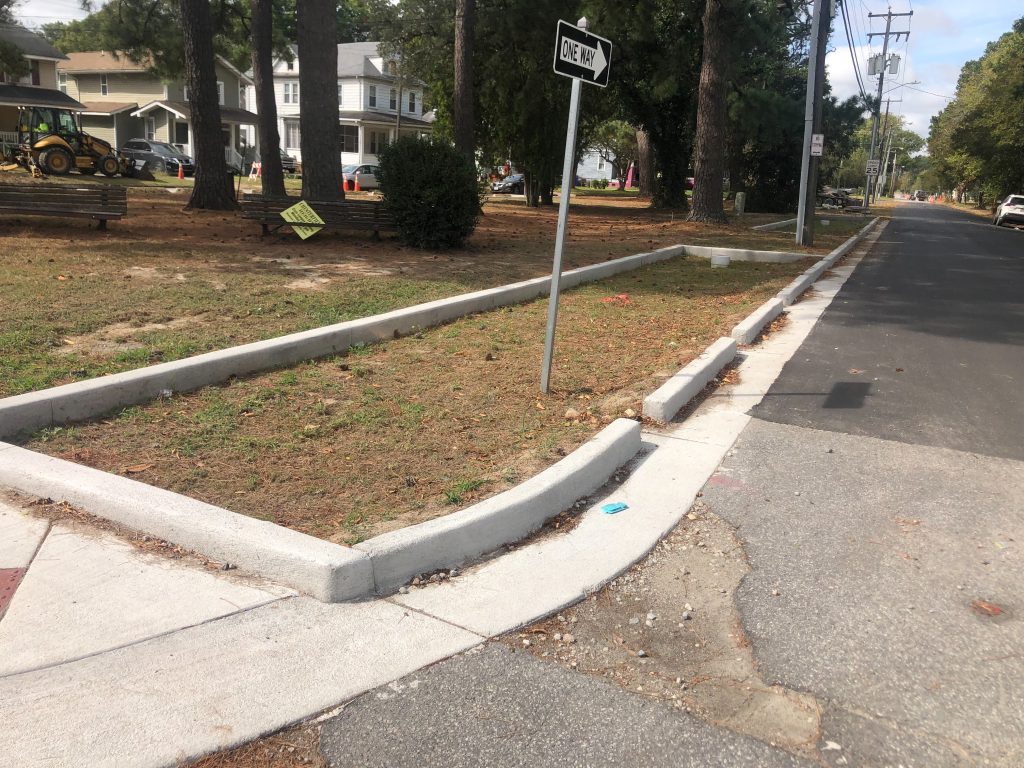
Example of a bioswale installed at our Ohio Creek Watershed National Disaster Resilience project.
The benefits of a bioswale versus a typical green area verge include:
- water quality improvements
- better aesthetics based on the species of native plants in the bioswale
- providing habitat for wildlife
However, bioswales need to be properly maintained to achieve long-term beneficial use.
Permeable Pavers
Permeable pavers can be used to act as a BMP (Best Management Practice) for stormwater in any community.
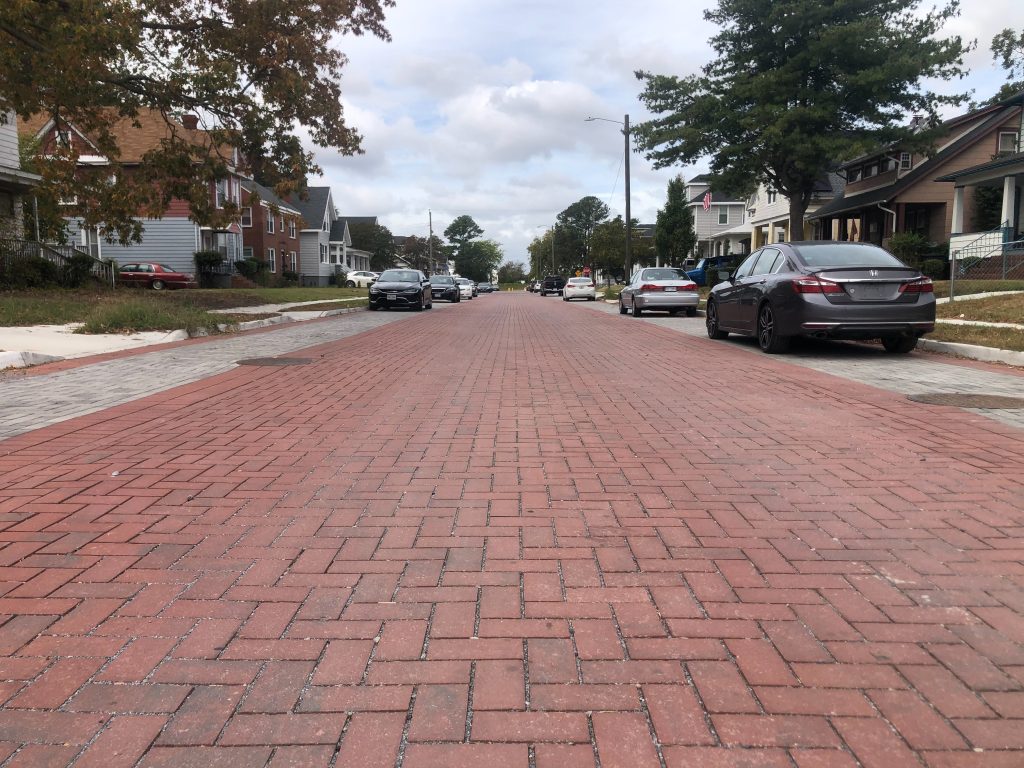
Example of Permeable Pavers on Marlboro Street in Norfolk, Virginia.
They allow water to pass through the pavers through the stone subgrade to allow filtration before getting to the stormwater system, instead of a typical hardscape runoff into a nearby stormwater system.
Permeable pavers can be installed in roadways, but the proper subgrade needs to be installed for optimal lifetime use. The vehicular traffic loads need to be considered when looking to install permeable pavers in a roadway. The subgrade should include adequate stone profiles and include an underdrain if necessary. We’ve found that sidewalks and plazas can be more suitable locations for permeable pavers because these open areas are only subjected to pedestrian traffic instead of vehicular traffic loads.
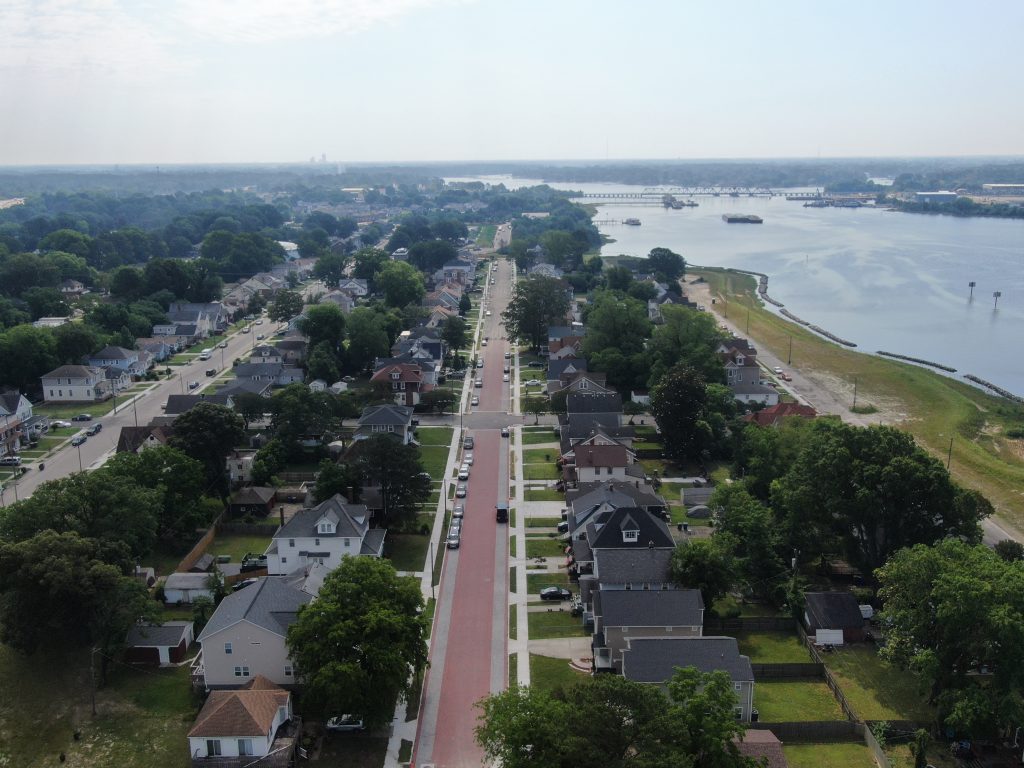
Drone view of Marlboro Street that was resurfaced with permeable pavers at our Ohio Creek Watershed National Disaster Resilience Project.
Living Shorelines
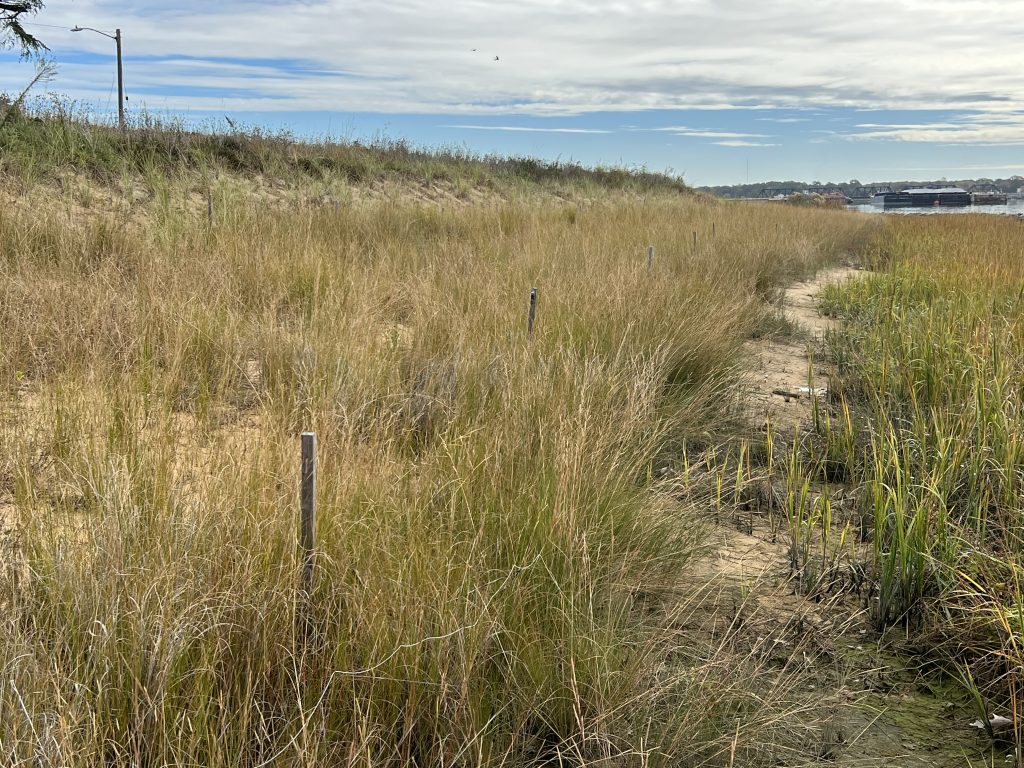 Living shorelines are made up of natural materials like plants, sand, and rock that grow over time protecting the surrounding community. At our Ohio Creek project, we installed new CBPA (Chesapeake Bay Prevention Act) approved plants to encourage resilient living shorelines that will flourish for years while protecting newly installed flood protection measures.
Living shorelines are made up of natural materials like plants, sand, and rock that grow over time protecting the surrounding community. At our Ohio Creek project, we installed new CBPA (Chesapeake Bay Prevention Act) approved plants to encourage resilient living shorelines that will flourish for years while protecting newly installed flood protection measures.
Coastal areas benefit from constructing living shorelines by:
- Purifying water
- Reducing erosion
- Attracting wildlife to habitat
- Flood protection in large storm events
Wetlands
Constructed wetlands can be used as water treatment systems by filtering stormwater. To improve water quality, incorporating wetlands involves using the natural processes of wetland vegetation, soils, and associated microbial assemblages.
Benefits of utilizing wetlands:
- Water quality improvements by removing pollutants from stormwater runoff
- Climate resiliency: improving ecosystem in areas
- Habitat Improvement: providing wildlife habitats
How we used them / the purpose they provide:
- Increased existing wetlands throughout the project where space allowed
- In newly constructed wetlands, similar species of plants were installed to better blend into the existing ecosystem



